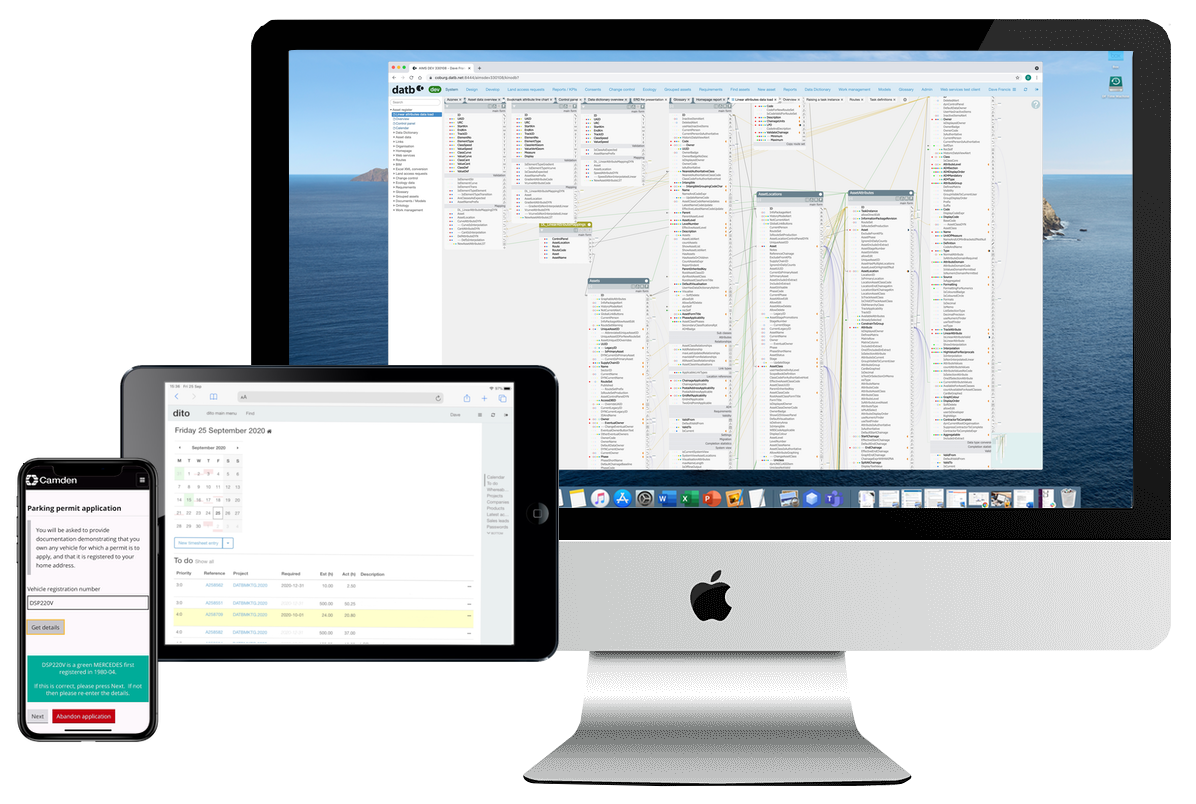
datb’s Asset Information Management System (or AIMS) has been used by High Speed 2 since 2016. It was initially developed to meet HS2’s requirements for an asset register of the proposed assets that will eventually make up the new high-speed railway line.
One of the key requirements for AIMS was the provision and management of the data dictionary and asset register; the HS2 contractors need the asset information/specification of the assets that they are building throughout the design, approval, build and handover process.
As contractors were appointed, a specific version for their needs (C-AIMS) was created. This was adopted by the Laing O’Rourke/Murphy Joint Venture (LMJV) in 2018. C-AIMS allows contractors to manage the asset information that they are accountable for during the project, with seamless data transfer between them and the master repository, held by HS2.
A core additional requirement specified by Laing O’Rourke was the ability to generate and manage land access requests. The construction team need to access the lands surrounding the proposed route for inspections and surveys to look at the land for purposes such as construction needs and plant/wildlife habitat purpose. Accordingly, datb developed the LARMS module to meet this need.
In 2020 East West Rail (EWR) adopted AIMS at the centre of their Common Data Environment. This provides a single version of the truth for all their asset information needs, with core asset information either held by AIMS or federated into the application. These requirements led to many new integrations including ESRI, Salesforce, SAP and Aconex.
Furthermore, the ALIGN JV (Joint Venture) adopted AIMS to enable easy and high-quality data transfer back to HS2, in the same way as the Laing O’Rourke/Murphy JV.
Since then, datb developers have been working with the existing clients, local authorities and some large housing providers to develop a comprehensive suite of new features to enhance AIMS and provide additional functionality over and above the original use case.
Just like with a CAD model, an asset can be defined and then instances of it can then be generated, with different locations. This is far more efficient than manually configuring countless assets that are all the same, with the only difference being their location.
These can be decisions, risks, issues etc. All of these and their relationships can all be traced back to the assets that they will impact. This allows a comprehensive risk assessment to be developed as all the items that could impact an asset and its performance are all available in one view (see images below).


Much as the data dictionary is the master repository for all assets, the glossary is the master repository for all the terms and definitions used. In addition to this, should there be challenges to an element of the project, a “lines to take” capability has been provided to ensure consistent communications.
The integration to ESRI has enabled the synchronisation of data. This provides AIMS with capabilities to represent asset information geospatially, which allows AIMS to do calculations such as the area of a polygon. This also means that GIS can be accessed from within AIMS (see images below).


To provide a Common Data Environment, it was important to integrate with other applications that contained data pertinent to achieving a single version of the truth. Accordingly interfaces to ARM, SAP, Salesforce and Aconex have been provided. Depending on the requirement these have been provided as either read only or read/write integrations, generally as XML- or JSON-based web services.
Whilst the asset register was initially designed for the rail industry it has not constrained the use of AIMS to just rail use cases. On the contrary, it is now being evaluated for housing use-cases, including fire safety, in local government and by the housing association sector. The maintenance of version-controlled asset class definitions within its Asset Data Dictionary allows clients’ administrative teams to define and manage whatever asset types, attributes and relationships are required to support a multitude of business requirements.

AIMS has undergone continuous improvement since its inception. As new customers adopt the platform it is enhanced with new features to meet the new requirements. As AIMS is built on the kinodb platform, these changes have been implemented fast with the value to the client being realised quickly.
As we look to the future it is important to recognise that our clients will continue to require further enhancements.
One focus of the datb development team is now on works management. Whilst the first customers required a register of assets to be constructed, more recent requirements focus on an asset register that allows them to maintain their assets.
This has led to the development of a comprehensive set of requirements which are now being built.
This is designed around the concept of a master work order and then instances of each, as tasks, to be conducted. An additional component allows for these to be scheduled and then undertaken.
These tasks, or work order instances, will allow for many actions to be undertaken, for example inspections, preventative maintenance and corrective works.
Once this is complete it paves the way for additional attributes to be configured, such as asset condition, and for these to be collected as a part of the recording of a work task.
These new capabilities significantly enhance the AIMS product, moving it from being an asset register to becoming a comprehensive, all encompassing, asset management platform.

If you would like to find out more about AIMS, or to discuss your assets management project, then please provide us with your details by completing the form below.



